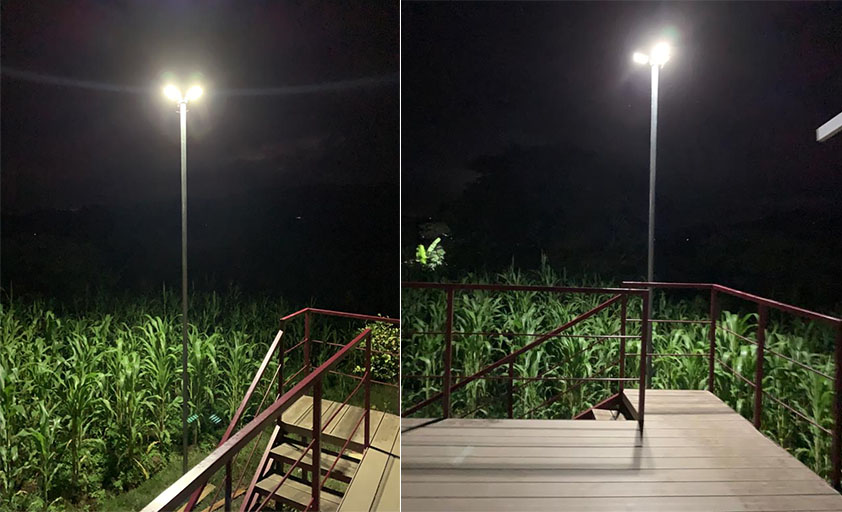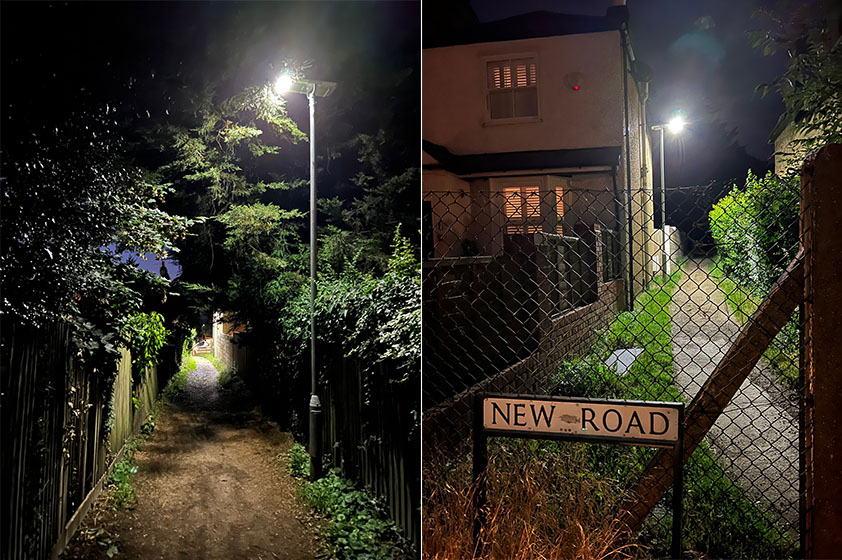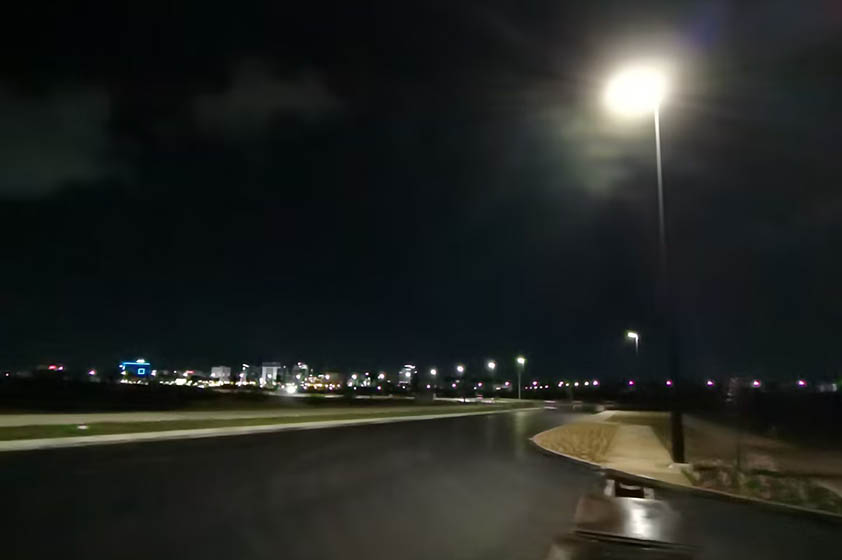Luminaires suitable for street lighting at night usually give priority to energy efficiency, longevity and adequate illumination. The following are some of the fixtures commonly used for street lighting:
LED lights:
High energy efficiency, long life and good illumination.LED lamps are popular for street lighting and consume less energy than traditional incandescent and fluorescent lamps.LED lamps offer a wide range of colour temperature options so that the type of light can be adjusted as required.
Solar Street Lights:
Uses solar panels to convert sunlight into electricity to power LED lights at night. It is an energy-saving and environmentally friendly alternative that is not dependent on the traditional power grid.
Solar panels absorb solar energy during the day, convert it into electricity stored in batteries, and release it at night to supply LED lights. These lights provide an energy-efficient and environmentally friendly alternative to traditional grid-powered street lights that rely on fossil fuels or other non-renewable energy sources.

Solar street lights have a number of compelling features and benefits that make them a favoured sustainable solution in the lighting sector:
Renewable Energy Utilisation: Utilising solar energy as a renewable and plentiful source of electricity reduces reliance on finite fossil fuels, thereby reducing carbon emissions and benefiting the environment.
Cost Savings: Although initial installation costs may be high, solar street lights have a lower overall cost over their lifetime due to reduced power consumption and maintenance costs.
Energy Efficiency: LED lamps are more energy efficient than traditional incandescent or fluorescent bulbs and have a longer lifespan, reducing energy consumption and frequency of replacement.
Off-Grid Capability: Suitable for areas where the grid is unavailable or unreliable, solar streetlights are able to operate independently to provide reliable lighting in remote or rural areas.
Low Infrastructure Requirements: Easy to install and relocate, as solar street lights do not need to be connected to the grid, reducing infrastructure requirements.
Automatic operation: Solar streetlights are often equipped with light sensors and timers that automatically adjust the switch to turn on or off based on light levels.
Reduced Light Pollution: Designed to reduce light pollution, they emit directed and focused light to protect the natural nighttime environment and wildlife.
Low Maintenance Costs: LED fixtures have a long lifespan and solar street lights have fewer moving parts, reducing the need for maintenance.
Customisable Designs: Available in a variety of designs, sizes and styles to suit different urban, suburban and rural environments.
Environmental Impact: By reducing carbon emissions and the need for non-renewable energy sources, solar street lights help create a cleaner environment.

High Pressure Sodium (HPS) Lamps
Highly efficient, has been a common lighting choice for decades, producing higher lumens per watt of energy. The light emitted is a warm yellow colour, which can distort colour and visibility, and is more conventional than LEDs.
Metal Halide Lamps
Provide a brighter white light and are often used in areas that require high intensity lighting. Less energy efficient than LEDs and may not be as energy efficient as LEDs.
Induction Lamps.Relatively efficient and long-lasting with a long life and good energy efficiency. Not as common as LEDs compared to other traditional fixtures.
Solar Powered LED Lights
Using solar panels to charge during the day and power LED lights at night, suitable for remote areas or places with limited electricity. An environmentally friendly, green energy option, but initial investment may be higher.

In Conclusion
Taking into account brightness levels, energy efficiency, maintenance costs, light distribution, colour temperature, environmental impact and initial investment, LED lamps are often preferred because of their combination of energy efficiency, longevity and customisable lighting options. It is important to ensure that safety and regulatory requirements are met while pursuing energy efficiency and environmental friendliness. Thank you for this comprehensive look at the street lighting selection process!
Table of Contents